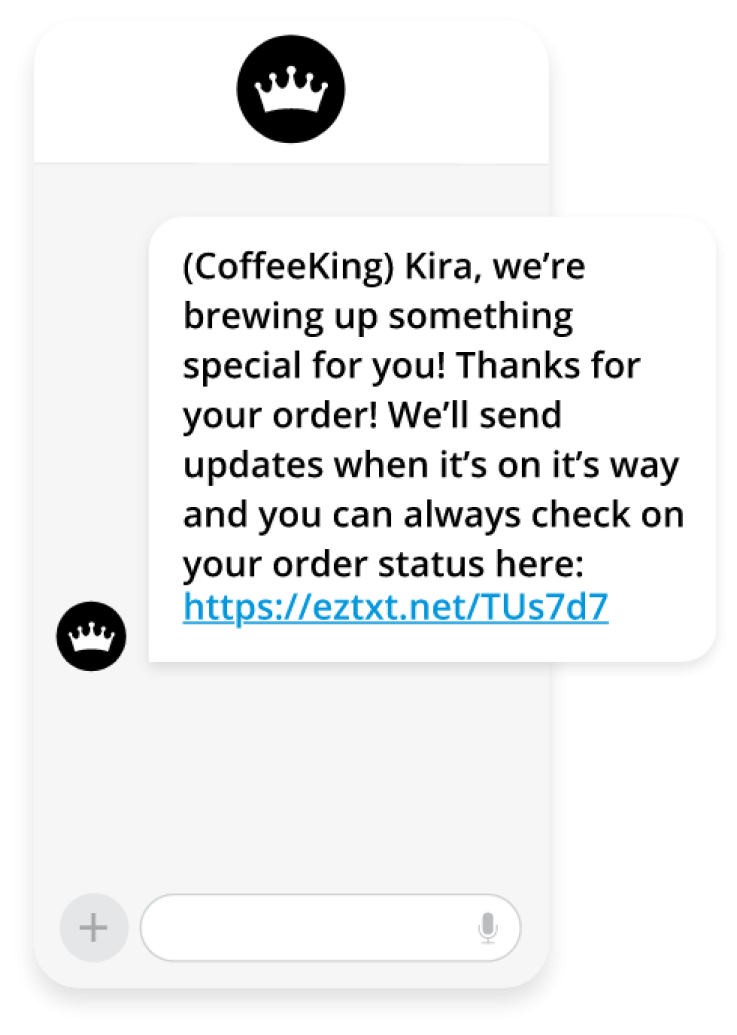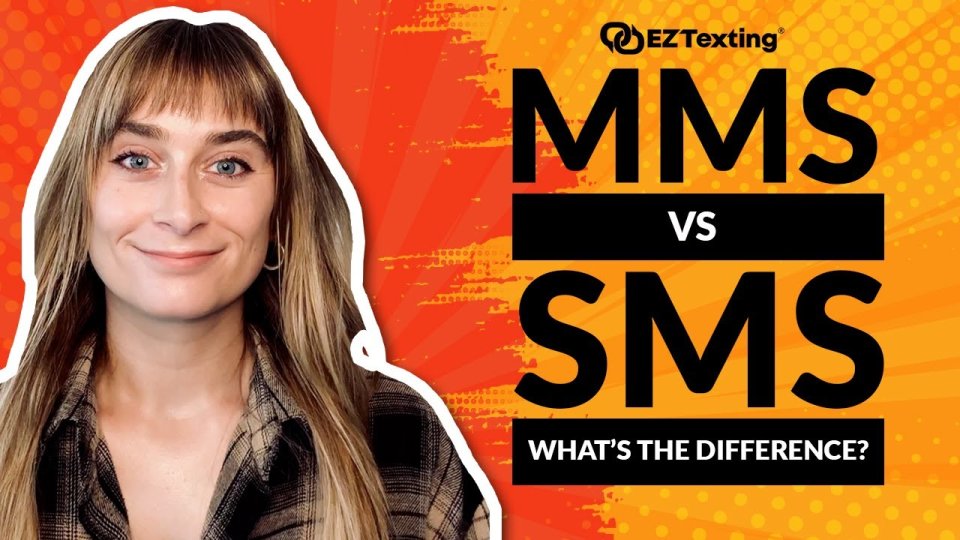SMS vs MMS: What's the Difference?
Learn the differences between SMS and MMS Messaging and how they can help power audience engagement, support, and conversions.

The differences between SMS and MMS are easy to decipher:
- SMS is primarily for text-only messages up to 160 characters and are sent over cellular networks.
- MMS requires a data connection and allows for multimedia content like a picture, a short video, or audio. MMS messages also allow for messages longer than 160 characters.
- Another key difference between MMS and SMS is price. At EZ Texting, one SMS costs 1 credit to send, while MMS messages cost 3 credits per message.
- Finally, while SMS may be the right channel for convenience messaging, like reminders and notifications, MMS messages are often a better fit for promotional and marketing messages, where an image can make all the difference.
Compare SMS vs MMS
SMS Overview
- Character Count: 160 limit and can contain links and emoji
- Cost: 1 credit
- Use Cases: Critical Alerts, Instant Reminders, Notifications
Data Connection: SMS does not require a data connection

MMS Overview
- Character Count: MMS has no character count limit and can contain links and emoji, as well as an image, short video, or audio file
- Cost: 3 Credits
- Use Cases: Marketing, Promotions, Customer Support, Onboarding, Delivery Confirmations
- Data Connection: MMS does require a data connection to transmit

The Pros & Cons of SMS & MMS
Pros of SMS
The primary advantages of implementing SMS for reaching your audience include:
• SMS Messages are short and simple and can be read quickly and easily
• All native texting applications on mobile devices can receive SMS messages
• SMS is low cost and can be
• You can easily automate SMS to save time
• It’s easy to create and send SMS messages quickly with a message generator, like AI Compose
• SMS does not require an internet connection or cellular data, ensuring deliverability even when internet connectivity is impaired and allowing you to communicate with your audience anytime, anywhere
Cons of SMS
• SMS messages can fail to convey the excitement of a new product or service
• Each SMS message is limited to under 160 characters
• No or few formatting options
Pros of MMS
The advantages of using MMS to communicate with your audience include:
• MMS allows you to use images, video, and audio to communicate
• Including an image in MMS texts can improve engagement rates by more than 60%
• MMS messaging have no character count limits
• EZ Texting offers a best-in-class MMS experience with millions of images and a dynamic image editor powered by Shutterstock
Cons of MMS
• Sending an MMS costs more than sending an SMS
• MMS messages require a data connection to send and receive
• May not be supported by older mobile devices
• Slower to send and receive compared to SMS
When Should I Send an MMS vs SMS?
It’s worth considering your business, your products, and your strategy when deciding whether to send an MMS or SMS. Humans are visual by nature and we’ve found that adding an engaging image or video consistently drives more engagement. In fact, our 2024 Consumer Behavior Texting Report found that 61% of consumers are more likely to click or purchase a product if they receive a promotional text including an image.
Which texting strategy is right for your organization? When choosing between SMS versus MMS, think about who you are talking to and why?
- Are you guiding them to a sign-up form or asking them to click through to a website? Then a concise SMS instruction might be exactly what your consumer needs.
- Is your product or service visually compelling (E.g., baked bread, jewelry, spa/beauty services)? Then a beautiful image and a gentle text reminding your customer of your brand might make more sense.
SMS messages are concise and best suited for alerts, notifications, confirmations, or guiding your audience to a valuable link, whereas the visual power of an MMS text is better suited for dazzling your audience with product shots—pastries, dresses, flowers, cars, homes, etc.—and any instance where you really want people to take visual notice. Sometimes short and sweet wins the day, but MMS messaging offers a flashier, and ultimately more engaging, way to excite your mobile audience.
Also, consider the drawbacks of each messaging channel. For example, the character constraint of SMS can cause significant roadblocks for businesses that need to convey large amounts of information. MMS is more visually compelling, but MMS messages also cost more to send. So, make sure you're using MMS at the right time, for the right messages, as sometimes short and sweet wins the day.
Regardless of which strategy you use, always get permission from your subscribers. Like lousy email marketing, no one wants to receive a spam text, so ensure your texts are valuable for the end user. And just like email, the Federal Communications Commission (FCC) enforces compliance with texting guidelines.
See other resources related to:

